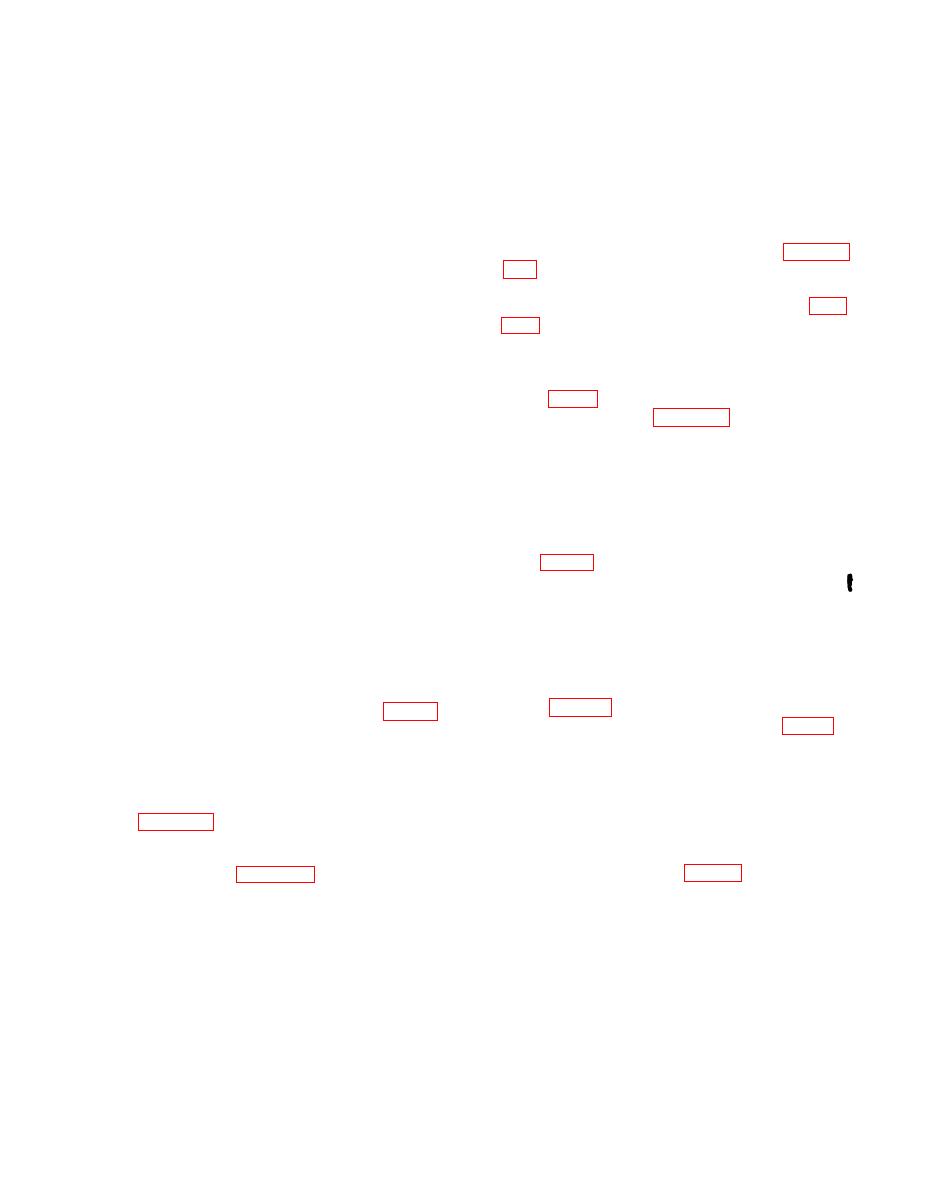 |
|||
|
|
|||
|
Page Title:
Decoder Section, Basic Logic Analysis |
|
||
| ||||||||||
|
|
 TM 11-6695-667-45/NAVSHIPS 0969-249-8010/NAVAIR 16-30APM123-2/TO 33A1-367-22
ampifier Q3 is controlled by receiver sensitivity
depends on the type of test in progress. After video
control A8R5. Adjustments are made with the
gate 2 is enabled, the reply video processed by the
equivalent minimum transponder set RF level (0
video amplifier is gated to video shaper DSS1.
Each video pulse triggers video shaper DSS1,
to 15 dbm) present at PROBE jack A15J24.
which produces 0.7-microsecond pulses. The video
Sensitivity control A8R5 is then adjusted until
shaper is a one-shot multivibrator containing
video amplifier Q3 output is sufficient is just drive
transistors A11Q1 and A11Q2 and provides 0 and
video shaper DSS1 through video gate 2 (c
1 outputs. Transistor A11Q2 produces the postive-
below). This action results in a just-accept con-
going 1 output, while A11Q2 simultaneously
dition. A voltage divider consisting of resistors
produces the negative-going 0 output. Both groups
A8R6, A8R7, and A8R8 connects the emitter of
of pulses are fed to the error detector (para 2-
A8Q2 to the base of A8Q1 to provide current feed-
back for temperature compensation. Capacitor
gate 1 in the decoder section, where only the F1
A8C6, connected across A8R8, provides high fre-
or I/P pulses of a pulse train are gated (para
quency compensat ion. When A8Q1 conducts, the
2-14C(3)).
resultant negative-going signal at the emitter of
A8Q2 is coupled through capacitor A8C5 and re-
2-14. Decoder Section, Basic Logic Analysis
sistor A8R9 to video amplifier A8Q3. Video
a. Video-Enabling Functioning. Video-enable
amplifier A8Q3 and emitter follower A8Q4 are
DFF6 (fig. 8-3) provides the video-enabling volt-
temperature compensated by a voltage divider
age to video gate 2 (para 2-13c). This flip-flop
network similar to the one in video amplifier Q1.
multivibrator is initially reset by a decode-enable
Video amplifier A8Q3 is normally conducting and
pulse produced by the last (P3) interrogation
the negative input video pulse at its base decreases
pulse. The decode-enable pulse also triggers video-
this conduction. The increasing collector voltage of
enable delay DSS4, which generates a video-delay
A8Q3, in turn, increases the emitter voltage of
pulse. Video-enable delay DSS4 is a one-shot
A8Q4. To obtain a fast pulse risetime, capacitor
multivibrator containing transistors A10Q1 and
A8C8 is forced to discharge through resistor
A10Q2, and produces a 1.8-microsecond positive
A8R11 by the emitter action of A8Q4. This ef-
pulse (fig. 8-13). The output is taken from the col-
fective feedback to the base of A8Q4 forces it to
lector of transistor A10Q2, normally
conduct-
conduct at a faster rate. In discharging, capacitor
ing. When DSS4 is triggered, A10Q2 ceases
A8C8 blocks conduction through diode A8CR3
conduction for 1.8 microsecond. The trailing edge
until its charge potential approaches +12 volts.
of the resultant 1.8-microsecond positive pulse sets
This condition isolates the capacitor surge from
video-enable DFF6 and also triggers read delay
the + 12-volt source. The resultant video at the
DSS5 (e below ). Video-enable DFF6 is a flip-flop
emitter of A8Q4 is coupled by capacitor A8C16 to
multivibrator containing transistors A9Q1 and
either video gate 1 or video gate 2 (c below).
A9Q2 (fig. 8-12). In a set state, the 1 output of
A9Q2 is high and enables video gate 2 (fig. 8-3).
forms as the receiver gate during all test set oper-
Thus, the receiver gate is enabled 1.8-microsecond
ations, except mode 4 tests. Mode 4 video is con-
after the trailing edge of the P3 interrogation
trolled by video gate 1 and gates this video signal
pulse.
to external equipment. Video gate 2 is enabled dur-
b. Receiver Gate Period and Video-Enabe Re-
ing self -test. operation by encode enable IFF1
set Functining. Line-drive enable DFF1, counter
DFF3/DFF4, or the M1/M3 timing pulses ( (1)
at SELF TEST. During all other functions,
below ) conclude the receiver gate period by reset-
switch A15S66 connects gate diode A8CR11 to video
ting video-enable DFF6 (fig. 8-3). This action
enable DFF6 (para 2-14a). Video enable DFF6
removes the enabling voltage from video gate 2
provides an enabling voltage to video gate 2, 1.8
in the receiver section. A delayed 22-microsecond
microseconds after transmission of the last interro-
gation (P3) pulse. Duration of the gate period
M1 pulse controls the operation of DFF1 and
Change 4
2-19
|
|
Privacy Statement - Press Release - Copyright Information. - Contact Us |